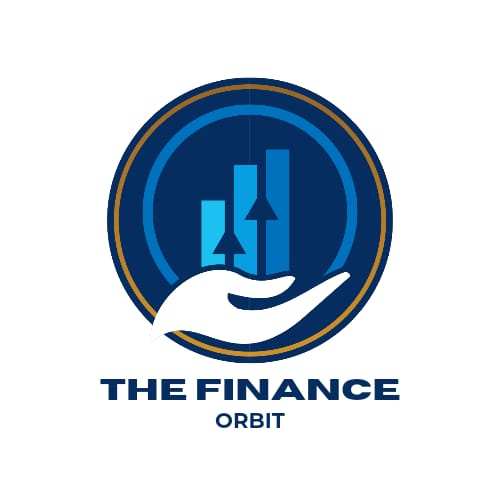Let us guide you through your credit card applications!
When it comes to credit card applications, the process might seem straightforward, but the details you provide can make or break your chances of approval. With automated systems and algorithms now playing a major role in credit card approvals, it’s essential to present yourself as a credible and low-risk applicant. This post will dive into the five things you should never write on a credit card application, whether you’re applying for personal or business credit.

1. Retirement or Self-Employed Status
Why “Retired” Is a Red Flag
When filling out a credit card application, indicating that you are retired might seem harmless, but it’s a significant red flag to underwriters. Lenders often view retired individuals as high-risk because they may be on a fixed income with limited ability to repay debts. The concern is that a retiree might have already exhausted their savings or that their income stream is too small to handle new credit obligations.
Why “Self-Employed” Can Be Risky
On the surface, being self-employed might sound impressive, but credit card companies often view it with caution. The perception is that self-employed individuals might have unstable or unpredictable income. When you list “self-employed” on your application, you may inadvertently signal that your finances could be volatile, leading to concerns about your ability to make consistent payments.
What to Do Instead
Instead of listing “retired” or “self-employed,” consider providing the name of your business or using a title that reflects your role within your company. For example, instead of “self-employed,” you could write “CEO of [Your Business Name].” This creates the impression that you have a stable and formalized source of income, which is more appealing to credit card issuers.
2. Low or Unrealistically High Income
The Danger of Low Income Reporting
Reporting a low income on your credit card application can be just as harmful as reporting too high an income. Lenders use your income to determine your debt-to-income (DTI) ratio, which helps them assess your ability to take on new debt. If your income is too low, you may not meet the minimum requirements for approval, or you may be offered a lower credit limit than you need.
Why Exaggerating Income Backfires
On the flip side, exaggerating your income can also lead to trouble. If you report an income that’s unrealistically high, you might trigger a manual review of your application. Lenders may ask for proof of income, and if you can’t provide it, your application could be denied, and you might even be blacklisted by the issuer.
The Ideal Income Reporting Strategy
To avoid these pitfalls, it’s crucial to report a believable income that you can justify. Consider using your household income, which includes the earnings of your spouse or partner if applicable. If you have a fluctuating income, such as in the case of freelancers or business owners, you might use your average income over the past few years or a conservative estimate of your projected income. The key is to be realistic and prepared to provide documentation if required.
3. High-Risk Business Activities
Understanding Business SIC and NAICS Codes
When applying for a business credit card, you’ll often need to provide your business’s industry classification, known as the SIC (Standard Industrial Classification) or NAICS (North American Industry Classification System) code. These codes help lenders categorize your business, and some industries are considered higher risk than others.
Why Certain Businesses Face More Scrutiny
Certain industries, such as real estate investing, credit repair, and cannabis sales, are often seen as higher risk by traditional lenders. These businesses are either prone to financial volatility or involve legal complexities that banks might prefer to avoid. If your business falls into one of these categories, listing it on your application can lead to an automatic denial or a significantly lower credit limit.
How to Present Your Business
If your business is in a high-risk industry, you can still improve your chances of approval by carefully choosing the wording on your application. Focus on the broader, less risky aspects of your business. For example, if you’re in real estate, you might describe your business as a “property management company” rather than “real estate investor.” This slight shift in language can make your business appear more stable and less risky in the eyes of the lender.
4. Questionable Use of Funds
What Lenders Want to See
When asked why you want a credit card or a line of credit, it’s important to provide a reason that reassures the lender about your financial stability. Lenders prefer to see reasons like “business expansion,” “marketing,” or “working capital.” These purposes suggest that you have a solid plan for the funds and that they will contribute to your ability to repay the debt.
What to Avoid
Avoid mentioning plans to use the funds for high-risk or controversial activities, such as “starting a cannabis farm,” “investing in real estate flips,” or “launching a nightclub.” These uses of funds can raise red flags for lenders, making them less likely to approve your application. The goal is to present your need for credit as low-risk and essential to your business’s growth and stability.
How to Frame Your Request
When completing your credit card application, frame your request in a way that aligns with the lender’s risk tolerance. For example, instead of stating that you need the funds for “buying properties,” you could say that you need them for “business operations” or “inventory acquisition.” These phrases are less likely to raise concerns and more likely to result in approval.
5. Inconsistent Information Across Credit Card Applications
The Role of Automated Algorithms
Today’s credit card application processes are largely driven by algorithms that cross-check the information you provide against data from credit bureaus and other sources. If there are inconsistencies—such as different names, addresses, or job titles—between your application and your credit report, you could be flagged for further review or even denied.
Why Consistency Is Crucial
Consistency across your applications is crucial because it ensures that automated systems don’t trigger unnecessary reviews. For example, if your credit report lists you as “John A. Doe” but your application says “John Doe,” the discrepancy could slow down your application or lead to a denial. The same goes for your employment history, income levels, and even your address.
How to Ensure Consistency
Before submitting a credit card application, take the time to review your credit reports from all three major bureaus—Equifax, Experian, and TransUnion. Make sure your personal information, employment history, and address are consistent across all reports. If you notice any discrepancies, address them with the credit bureau before applying for new credit. This step can significantly increase your chances of automatic approval.
Why You’re Not Getting Those Automatic Approvals in Your Credit Card Applications
Understanding Credit Scoring Algorithms
Credit scoring algorithms are designed to quickly assess the risk of lending to an applicant. These algorithms consider a wide range of factors, including your credit score, income, employment status, and more. If anything in your application triggers a red flag, the system may either deny your application or flag it for manual review.
Common Reasons for Denials
One common reason for denial is a lack of consistency between your credit report and your application. Another is failing to meet the lender’s minimum income or credit score requirements. Additionally, being in a high-risk industry or listing questionable uses for the funds can also lead to denial.
How to Increase Your Chances of Approval
To increase your chances of getting automatic approval, make sure that all the information on your application is consistent with your credit reports. Use realistic income figures, avoid high-risk industry classifications, and provide a solid, low-risk reason for needing the credit. By taking these steps, you can present yourself as a credible and low-risk borrower, improving your chances of approval.
Conclusion
Applying for a credit card, whether for personal or business use, requires careful consideration of the information you provide. By avoiding these five common mistakes—listing retirement or self-employment status, reporting low or exaggerated income, highlighting high-risk business activities, indicating questionable uses of funds, and providing inconsistent information—you can significantly increase your chances of approval. Remember, the goal is to present yourself as a low-risk, credible borrower who is likely to repay the debt on time.
If you’ve found this information helpful, feel free to share your thoughts in the comments below. Let’s help each other navigate the sometimes-confusing world of credit card applications!

